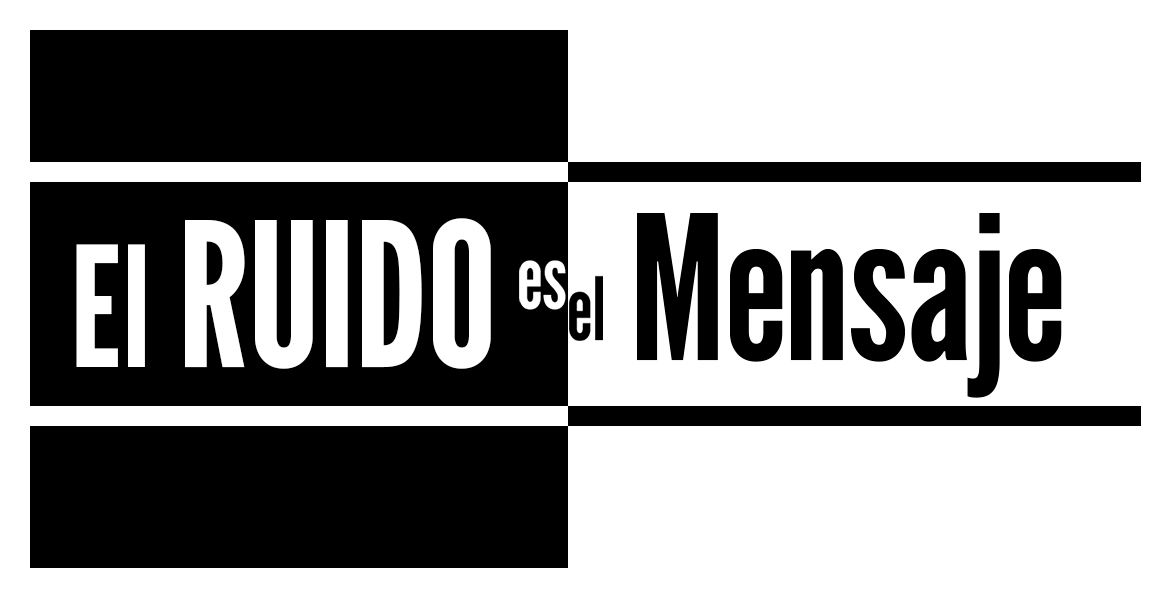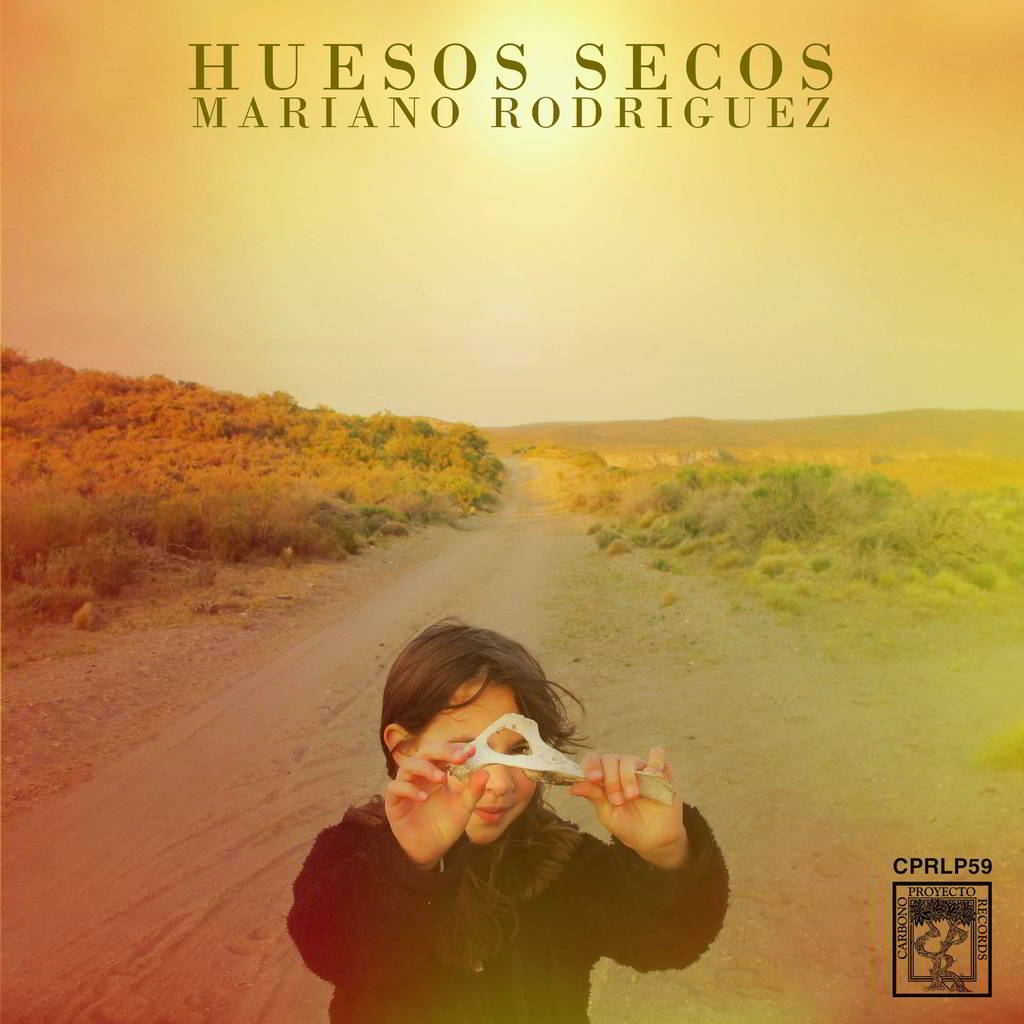| ARTIST: | Mariano Rodríguez | |
| WEB: | Bandcamp | |
| WORK: | Huesos Secos (DRY BONES) | |
| PLUS: | No | |
| FORMAT: | Digital | |
| LABEL: | Carbonoproyecto | |
| RELEASE: | January, 2020 | |
| COWNTRY: | Argentina | |
What is Huesos Secos?
Why can a record be called that?
Mariano Rodriguez is a name-size author, illustrator and graphic designer with an apparent passion for typography and certain aesthetics for fine line and trimmings, typical in the cult of certain aesthetic arts such as graphic design.
- Huesos Secos is a record, I like to call it a Góspel record, instrumental let’s say. Even though gospel is mostly sung music, there is an instrumental tradition since the 1950s, which is what was called Sacred Steel Guitar. It is music played with lap steel or steel pedal, instrumental, devotional, instrumental praise music. But most of the time the gospel is sung, but well, I do instrumental music. I don’t sing. It’s an instrumental gospel record if you will.
A very unorthodox approach to the genre, which is closer to the intentions than to the traditional forms of this type of music itself, where Rodriguez did not try to “recreate” a style, he went out to be inspired by it.
It is a work in which for the first time, as he tells us, he recorded with twelve string acoustic guitar, most of the time he recorded with six string guitars, with Dobro, mandolin, banjo, other plucked string instruments, but not with twelve string acoustic guitar, and it is the first record in which he plays Weissenborn which is a type of acoustic lap steel of Hawaiian origin, which connects with the sacred steel guitar, which is music made with lap Steel, but electric and this is a lap steel acoustic.
- Basically it is a record of “Unorthodox Instrumental Góspel”, a personal and more experimental approach to devotional music or praise music. As I was saying, there are many pieces recorded with twelve-string acoustic guitar and that also has a relationship with Gospel. The twelve-string acoustic guitar is a very choral guitar, much more “polyphonic” than the six-string guitar, the strings being tuned in unison, but in octaves, they generate an effect similar to what in the electric guitar is the “chorus”, it is a chorus thing, so it has a reminiscence, a very choral voice. For example, Reverend Blind Gary Davis, who was a blues and gospel soloist, used the twelve-string guitar a lot, so he also links the record to the gospel.
Perhaps those who are more accustomed to large orchestras or the superficiality of the gospel genre have that lavish idea of many voices in unison in a Baptist church full of brunettes of all sizes, ages and dimensions singing “Oh Happy Day!” (Edwin Hawkins) or remember the imposing figure of Aretha Franklin asking for respect with Ray Charles in The Blues Brothers (1980, John Landis), because no, the universe does not end with General Paz, there are interpretations and reinterpretations of the genres, and in this album, Mariano Rodriguez put all his love and passion for this style in his hands.
- About the composition and recording process of Dry Bones, as far as the recording was concerned it was very short. It’s the first time I’ve recorded an album in a week and mixed it in another week. I always record in long processes, it’s two, three, four months of being recording. Even though I record in my home studio, it took me a long time to record and I am very meticulous in the recording process. This time, no, this time I recorded everything in less than a week, I think I started recording on a Thursday and on Sunday I had already finished it, I did a “pre-mix” and during the week I listened to it and then I arranged it a little more and that was it. It must have been seven or eight days of work in total, between recording and mixing.
The songs were almost composed before, they were songs that I had turned over in my head and that I had been playing.
It had been four years since I had recorded a whole album, I had been participating in compilations such as the tribute to Robbie Basho, in the tribute to Jack Rose that I recorded at about the same time as the album.
But they were themes, musical ideas that I already had, in reality it’s difficult for me to talk about themes because what I do basically is develop a very simple idea, a very simple melodic idea and harmonically also very simple and take advantage of it as an excuse to improvise and make variations on that idea, let’s say, it doesn’t have the format with parts, introduction… they don’t have a format, there is no established format. I never play the same “theme”, it has to do with the mood, with the atmosphere that is generated if I am playing live with people at that moment.
But yes, it was a quick process and unlike other albums it was recorded in late spring, I always record in late fall, early winter. I always record in the colder seasons. I recorded this album in the spring, unlike others.
And the change is remarkable, there are records, there are genres, there are instruments that ask to be listened to with certain atmospheres, climates and spaces. Prepare yourself for the act of LISTENING. This is what happens with HUESOS SECOS, a Creole record, with a southern air, inspired by a genre of humid climate at the edge of a river. This album deserves its own acoustic space accompanied by something very hot and perhaps in half-light to let the strings invade you for 40 minutes and make you go through the meadow of Bariloche with all its immense sound.
- The engine that triggered the story of recording this album was actually Fabián Racca from Carbon Project Records which is the label through which the album was released.
Fabián had been telling me for several years “Ey record an album for the label, come on” and I always ended up doing collaborations with CPR but from the graphic side, I am a graphic designer and illustrator so I always ended up getting involved in the, let’s say, visual part of the visual communication of the label’s albums and never producing material for the label itself. So a little bit the one who promoted this was Fabián, and well, we were exchanging the tracks that were being recorded and Fabián’s liner notes are like very dedicated, let’s say, he put a lot of effort into the work of writing each of the tracks, and how the recording process had been… and why each of the tracks… and what each of the tracks referred to…
Well, all that is an impeccable work that Fabián did and that is in the CPR page, the liner notes of Fabián I think are a kind of “guided listening”. So the engine of this record was Fabian.
Each listening is unique, it is a motto of our friend Fabian Racca, it extends to this album, it is also unique the work and his method, that of each artist who leaves his mark on his work making it important, with Huesos Secos, Mariano Rodriguez took as a lesson learned the theme of relaxing with the recording and mixing processes of not being so rigorous in that and enjoy more the moment of recording.
- I was always very involved in the search for perfection in sound, in the execution and in the end it ended up being something very tortuous and I was recording for months. With this one, as I recorded it quickly, I think I will continue working that way, let’s say, more impetuously, with more impetus, with more fiber and more heart and not so much brain. I think that’s what this record taught me.
If you like, you can listen to the podcast with the review here

